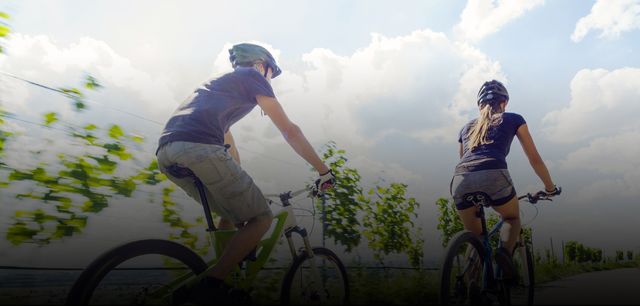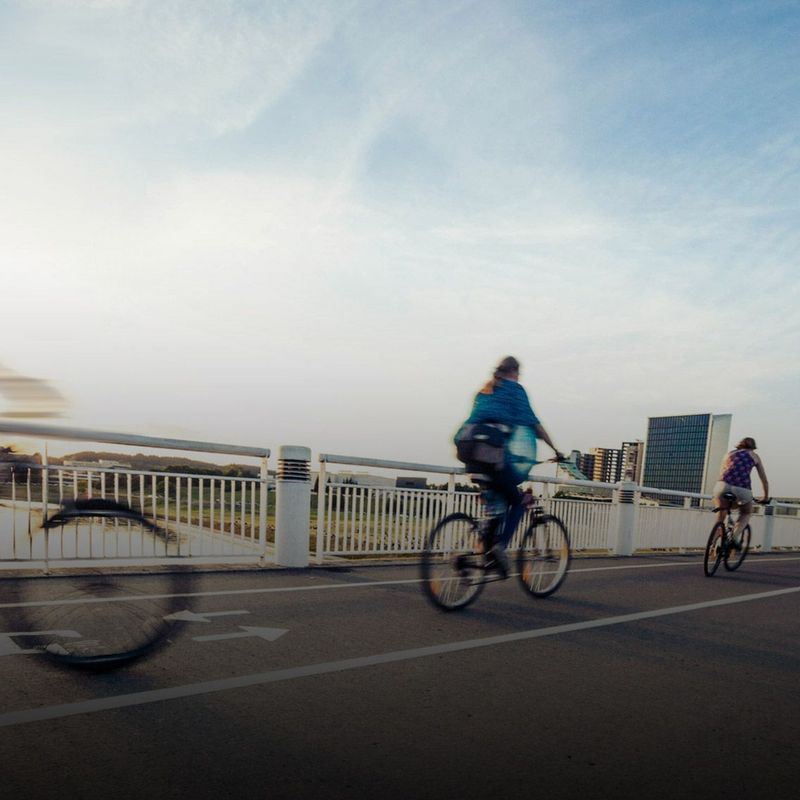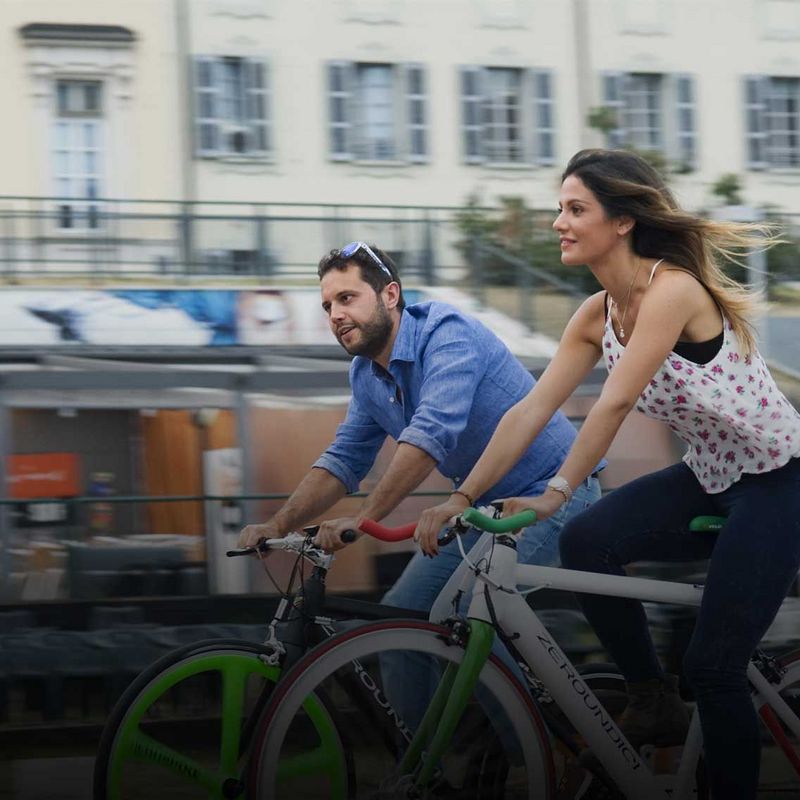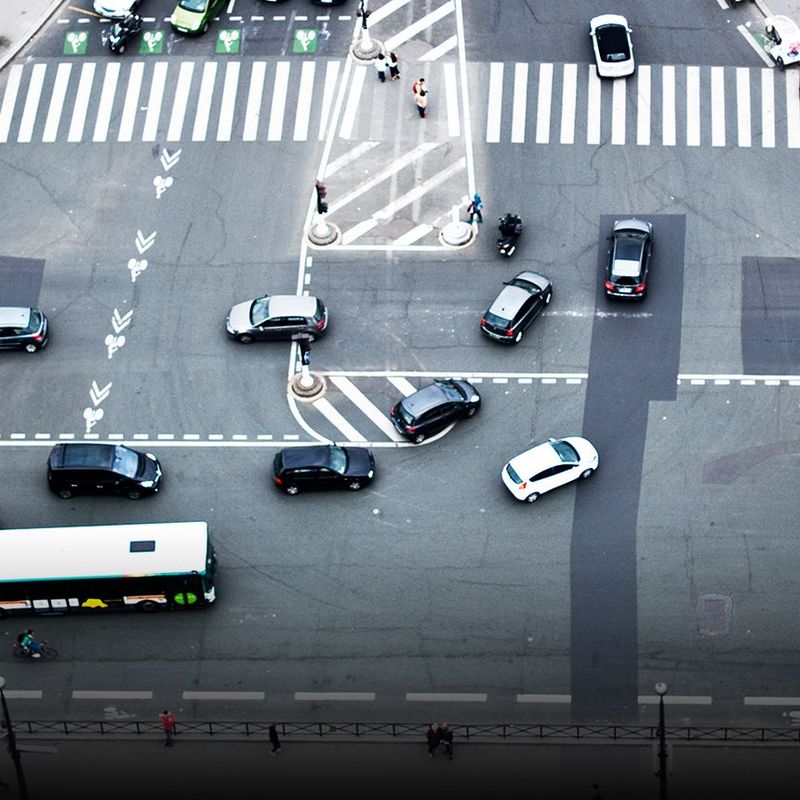11 August 2022
Whether you’re cycling through nature with the wind in your hair or coasting past an urban traffic jam, cycling has become ever more popular in recent years – both with and without the help of an electric motor. These clever gadgets could make your next trip out more comfortable, safer, or more fun.
GPS satnav on your handlebars
You still see them sometimes: the last remaining traditionalists, who pedal through the landscape with a map holder on their handlebars. But if you would prefer to be actively guided, you can get yourself a GPS navigation device. The small screen won’t just show you the right way to go. Most models also tell you how far you’ve come, how high you’ve climbed, your speed and other training data.
© GettyImagesIn addition to Google Maps, there are numerous apps where cyclists can find the most beautiful routes.
Mobile as satnav
If you don’t cycle quite as often or would like to save some money when you’re out and about, you can, of course, also use your smart phone as a satnav – combined with Google Maps or special apps for cycle routes such as Komoot, Bikemap. Strava or Bike Citizens. Apart from Google Maps, these are, of course, not free of charge. But their benefit is that they will show significantly better cycle routes away from the main roads. And they offer the option of downloading maps for your planned trip. This will save on data and help you in those rural areas where mobile phone reception is notoriously poor. And, last but not least, with apps like Komoot, Strava or Bikemap, you can also find and try out trips posted by other users as a way of exploring the surrounding area at home or on holiday. The smartphone can easily be attached to the handlebars using a simple rubber mount, robust metal brackets or waterproof cases which will also let you navigate in the rain. Some mobile brackets even come with built-in power banks. This is especially good for longer trips, as digital navigation is a major drain on battery life.
Bike trackers and digital antitheft devices
Some 700 bikes are stolen in Germany every day. Bike thieves do, of course, like to help themselves to popular and expensive electric bikes – and even high-quality locks aren’t necessarily enough to deter them. Some e-bikes also come with digital antitheft protection – they will, for instance, sound an alarm when the bike starts moving if your smartphone is not in the vicinity. Where bikes actually do get stolen, bike trackers can help their owners or the police locate the bike and, with it, the thief. Some manufacturers, such as Vanmoof or Stromer, fit trackers to the frame as standard, whereas Riese & Müller will do the same for a free, with additional costs involved in the process of returning the bike to its owner. Bike trackers can easily be added later, however – to both e-bikes and sought-after racing bikes. For Apple users, an Air Tag is a good-value solution.
Radar for your bike
Depending on the strength of the headwind, a cyclist will have more or less acoustic warning of a motor vehicle coming up behind them. The Rad-Radar from Garmin is intended to provide help here: it uses the cyclist’s mobile or a compatible bike computer to warn the rider of vehicles racing up behind them from as far away as 140 metres. This allows the rider to prepare and, if need be, ride further to the right (or left, depending on the country) to allow motorists to overtake at a minimum distance of 1.5 metres in built-up areas or 2 metres outside them. This early warning system comes with a hefty price tag, however: the basic Varia-Radar costs about 150 Euros, increasing to 200 Euros for a device with a built-in rear light. If that is too expensive, you can instead buy a couple of mirrors for a lot less money. These may be less high-end, but at least they will never need to be recharged.
© AdobeStockSmartphone, enough drinks and a hand pump - this completes the basic equipment for a carefree bike tour.
To pump manually or let a machine do the work
Even the loveliest of bike rides will grind to a halt at the roadside if you get a flat tyre. You should always carry a mini pump with you whenever you set out. If you find manual pumping too hard, you can as an alternative let a battery-driven pump do the work for you. Some models let you conveniently set the desired tyre pressure by means of a display. Many of them also have a built-in torch function, making it easier to get going again if you have a flat tyre after dark. Unlike manual pumps, compressors are a bit noisy, however – and, depending on the model, they will take up to a minute to pump up your tyre. If you don’t want to fall out with your neighbour at the campsite, you shouldn’t use a battery-driven pump at night or very early in the morning. Not only that, but electric pumps tend to be heavier than their mechanical relatives. Thanks to the motor, the weight of the pump makes less difference. But if you are the only source of pedal power, you should make sure that any battery-driven pump weighs less than 500 grammes.
Smart bike helmets
It isn’t just phones, clocks and houses that are getting ever smarter – cycle helmets are too. The helmets made by Livall, for instance, have rear lights for enhanced visibility, which can also be used as indicators via a handlebar-mounted remote control. This is a real advantage at twilight and after dark, but according to the rules of the road it is no substitute for the good old hand signal. These helmets also boast an SOS system which uses sensors to recognise a crash when it happens and informs a contact in an emergency. As you ride along, you can also use the integrated speaker and microphone to listen to music or make calls – and the manufacturer claims that you won’t be sharing your musical tastes with everyone around you at the same time. The Sena cycle helmet also comes with a built-in speaker, microphone and radio. The rear light is smaller and can’t be used as an indicator. But Sena does offer a walkie-talkie function. This will allow you to talk to your training partner when you’re out on a fast ride without constantly having to shout at the back of the rider in front of you. Provided, of course, that they are also wearing a Sena helmet. When it comes to Lumos helmets, lots of light and visibility are the order of the day. The front of the helmet features white LEDs, with red lights at the back which also work as indicators. And the special feature is this: if you connect it to your smartphone, the rear light will automatically light up if you brake particularly hard. Just as it would in a car, this serves to warn any following traffic and to keep you safe on your saddle.
Mobiles and bikes
The same thing applies as when you’re driving: when you’re riding a bike, your mobile shouldn’t be in your hand or pressed to your ear. Otherwise, you run the risk of a fine of at least 55 Euros, rising to 100 if you cause an accident. Cycling while listening to music, on the other hand, is in principle allowed. But it should never be so loud that it drowns out your surroundings and stops you being aware of the traffic around you.





